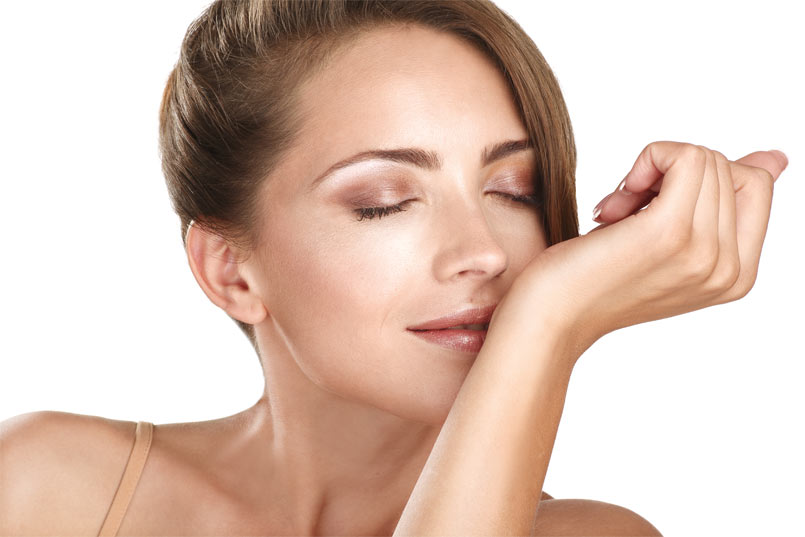Summer is many Sarasota-area residents’ favorite time of year, and it’s easy to see why. We’re lucky to be nestled along the beautiful, sun-kissed shores of the Gulf Coast, putting white sandy beaches and sparklingly clear water within easy reach. However, it’s all too easy to overdo it, and just one bad sunburn can be the difference between healthy, youthful skin and a leathery, sun-spotted complexion. Here’s our complete guide to sun and skin exposure to help you stay safe.
Who Loves the Sun? Not Everyone
Human bodies have evolved to benefit from the sun’s rays. Natural light helps us regulate our sleep patterns, keeping us alert during the day and allowing us plenty of restful sleep at night. Less exposure to the sun, especially in the winter, leaves many of us suffering from a type of mood imbalance called seasonal affective disorder. The sun also triggers our skin to produce vitamin D, which is essential for good health. However, there is a dark side to sun exposure in the form of skin damage.
As you might remember from high school science classes, light from the sun reaches Earth in wave form. Short-wave ultraviolet, or UV, light, is the type that is are harmful to your skin. The longer type of these UV rays are called UVA rays, and the shorter ones are UVB rays.
Over time, both UVA and UVB rays can affect the skin’s health and your appearance. The more sun exposure you get, the earlier you will begin to see signs of aging such as reduced elasticity, and more wrinkles and changes in skin’s texture.
After exposure to UV radiation, your exposed skin cells undergo a repair process that involves shedding and replacing dead skin cells. If you’ve ever had a severe sunburn, you have witnessed this repair firsthand as you watch your damaged skin peel off over the course of a week or two.
However, long-term UV damage to your skin can endure, taking a toll on your skin and connective tissues. And as you get older, your skin has a more difficult time repairing itself. As a result, you will notice more wrinkles and fine lines forming, and you will be increasing your odds of getting skin cancer.
A Brief Guide to Skin Cancer
Excessive sun exposure can also put you at greater risk for skin cancer, which is the most frequently diagnosed type of cancer in the United States. When UV light hits skin cells, it can harm the DNA inside them.
This damaged DNA can trigger changes in cells, causing them to grow and divide rapidly. Unchecked growth will create clusters of excess cells called a tumor, or lesion. These may be either malignant (cancerous) or benign (harmless).
Skin cancer can initially manifest as a tiny blemish or spot on your skin. A cancer that begins in your skin cells can also eventually spread to affect other organs in your body.
There are three broad categories of skin cancer: basal cell carcinoma, squamous cell carcinoma and melanoma. Of the three, melanoma is the most serious type. Warning signs of all three of these cancers include changes in the size, shape or color of a mole or other blemish, a sore that won’t heal or the emergence of a new skin lesion.
Because it’s almost always possible to cure skin cancers when people detect them and get them removed early, the Skin Cancer Foundation recommends monthly top-to-toe self-screenings to find any new or changing moles that might be cancerous or precancerous.
At University Park Dermatology and Medical Spa, we offer state-of-the-art Mohs micrographic surgery, the most advanced and effective way to remove skin cancer and prevent it from recurring.
How to Get Healthier Skin
The best and easiest way to protect your skin from damage, including skin cancer, is to restrict the amount of sun exposure you get. Avoid spending long periods in the sun, and if you must be outside on a sunny day, stay in a shaded area, rather than being in direct sunlight. Wear protective clothing and sunglasses, and apply sunscreen frequently between 10 a.m. and 4 p.m., which is when the sun’s rays are most intense.
The skin damage you see in your 20s and beyond is the result of those childhood sunburns you got. Therefore, if you have children, begin teaching them about smart sun exposure so they can develop good habits early. And, while some people may equate tanned skin with healthy skin, the truth is that there is no healthy or safe way to tan – either with natural sunlight or in a tanning bed.
If your goal in getting out in the sun is to encourage your body to produce vitamin D, remember it only takes 10 to 15 minutes in the sun to do the trick. You can also get vitamin D from foods like egg yolks and fatty fish, as well as dietary supplements.
When you are going outside, even if it’s overcast, have a game plan. Before you leave your house, apply a broad-spectrum sunscreen with an SPF of at least 30 to your face and body, and re-apply every two hours – more if you get sweaty or take a dip and your sunscreen is not sweat- and waterproof. The active ingredients in sunblock can also degrade over time, so make sure you double-check the expiration date on the bottle.
Being sun-smart and limiting the amount of time you spend outdoors is the best way to protect your skin from premature aging and skin cancer. And if you spot a suspicious mark on your skin, contact our Sarasota office to get it checked out.
If you are worried about sun damage or your chances of developing skin cancer, contact our office today to make an appointment. Not only do we provide advanced surgical techniques for skin cancer patients, but we also offer a wide range of non-surgical treatments to reverse the signs of aging and help people with sun-damaged skin feel more confident in their appearance, including laser skin care, radiofrequency microneedling, facials, peels and dermaplaning.






